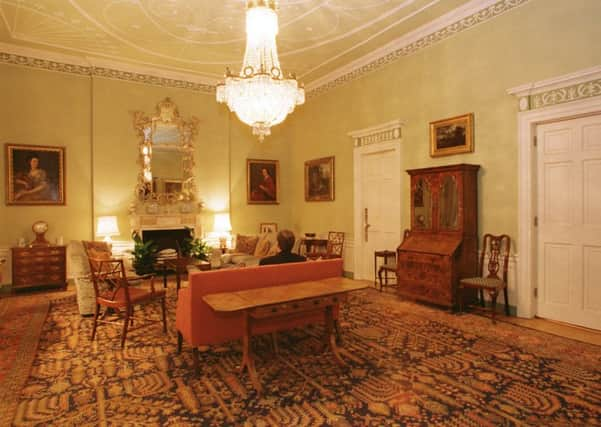Bute House chandelier ‘may have been Nazi loot’


Scottish ministers called a probe into the provenance of the fixture after a report questioned its origins before being gifted as part of Bute House, in Edinburgh, to the National Trust for Scotland 50 years ago.
An official guide book for Bute House states the chandelier was found “abandoned in one of the streets of Cleves”, in northern Germany, by English interior decorator Felix Harbord.
Advertisement
Hide AdAdvertisement
Hide AdMr Harbord, who was charged with repatriating works of art from Nazi Germany, is said to have “had it packed in empty munitions boxes, which he addressed to No6 Charlotte Square”, home of his client Lady Bute.
However, a report by Holocaust research organisation the Simon Wiesenthal Centre cast doubt on its provenance, suggesting it may have been “looted from the British collecting point at Schloss Celle, or it may be an object looted from legitimate German ownership”.
The report, written by Irish historian Erin Gibbons, states: “A number of matters arise from the chandelier affair.
Advertisement
Hide AdAdvertisement
Hide Ad“In this instance, Harbord had established a means of removing, from Germany, an unprovenanced artwork by placing it in an empty munitions box and addressing it to a client in Scotland.
“Provenance researchers will undoubtedly be interested to establish whether the chandelier is the only object that Harbord removed from Germany in this way, or whether there were others.
“Further research is required to try to establish the origins of the chandelier in question.”
The Scottish Government has now called on heritage body the National Trust for Scotland to investigate the chandelier claims after the 2008 report was unearthed by a Sunday newspaper. A Scottish Government spokeswoman said: “The Simon Wiesenthal Centre report raises questions over how the Bute House drawing room chandelier came to be brought to Scotland and into the ownership of the Bute family.
Advertisement
Hide AdAdvertisement
Hide Ad“We will discuss this with the National Trust for Scotland, which owns the property and most of the fittings, including the chandelier, to clarify if information on the provenance of the chandelier is contained in the trust’s archives.”
The National Trust for Scotland said it was uncertain how much information could be found but added: “We will pursue this with the Bute House trustees, who have been legally responsible for the supervision of the property since 1966.”
By the late summer of 1945, all the looted works of art that had been retrieved in the British zone of occupation were transferred to a permanent collecting point at Schloss Celle, near Brunswick.
Hundreds of crates containing works of art, mostly from the collections of the Berlin museums, were inventoried and made available for restitution of cultural property of foreign origin imported into Germany since 1939.
Advertisement
Hide AdAdvertisement
Hide AdLast week, Glasgow City Council agreed to pay compensation to the heirs of German Jewish woman Emma Budge after a Burrell Collection tapestry was found to have ben “confiscated” from her collection.
Museum experts in Glasgow have found hundreds of items with “uncertain provenance”, including 21 tapestries and two paintings to Sir William Burrell in the 1930s and 1940s. One, Animals and Lovers, came from Munich from Julius Bohler, previously described as “Hitler’s art dealer”.
A list of questionable items belonging to the National Galleries of Scotland include 33 pieces in the National Gallery and 58 in the National Gallery of Modern Art.